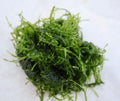Causes of Dead Snail and How to Deal with It
Although it may seem strange to see your snail floating, there are several causes for this:
A little amount of air becomes trapped in the shell and lungs of some snails, particularly those with lungs, as they close their shells, causing them to float to the top of the water like tiny balloons. They'll either sink back to the bottom after their shells are opened up or stick to the glass.
Traveling Quicker: Because snails struggle to swim, they occasionally float on the surface by storing air in their shells. This allows them to ride the waves. In the wild, they often act in this way to stay safe.
Poor Water Quality: Snails may rise to the surface as a result of poor water conditions, including temperature, pH, ammonia, nitrite, and nitrate levels, as well as dissolved oxygen levels. Some snails attempt to escape the tank, while others retreat within their shells and cease moving, and still others float. Make sure to examine the water's characteristics.
Hunger: If you keep your snail famished, it will float upside down to consume some of the pellets, flakes, or films of food that are generally floating on the surface. Many people believe that all snails consume algae, but mystery snails, for instance, don't consume algae and require a specific diet.
First, rule out the chance of death if you see your snail floating for an extended period of time. Try to determine why it is floating after you are confident it is still alive.
How Can I Tell If a Snail Is Hibernating, Sleeping, or Dead?
Snails don't need as much rest. They also sleep at a different time than fish and other aquatic animals, as well as humans.
1. How Do Snails Sleep?
Sometimes a sleeping snail might appear to be dead, which can worry you. Snails may rest anywhere. They can adhere to the decorations or glass and hang upside-down or sideways as they sleep. They may snooze while floating or even with their shell on the ground.
-
How Much Sleep Do Snails Get?
Snails aren't diurnal, which means they don't sleep at night, unlike the majority of fish. They typically sleep for 13 hours in seven short bursts and are up for longer than a day at a time. A snail occasionally sleeps nonstop for two or three days. Assassin snails, for example, can eat their food and then sleep for a few days before getting hungry again.
-
Hibernation of snails
When it becomes chilly, snails enter a state of hibernation. If they notice a sharp drop in temperature, this might be activated in the tank. Additionally, they might experience aestivation, a condition in which a snail hibernates for a protracted period of time in the summer to avoid drying out due to the high temperatures.
How to Handle a Dead Snail
The first step when a snail dies is to remove it and verify the water's characteristics. Perform a thorough water change over the following three days if you see an ammonia surge. Some aquarium enthusiasts choose to leave the snail in the tank so that scavengers like hermit crabs can consume it.
Do this only if you are certain there will be enough crabs to finish the snail in less than two days. That is not advised in any other case. After removing the dead snail's body, you have a few ways to get rid of it:
-
Get rid of it
First and foremost, never use bare hands to handle a dead snail. Get it out of the tank with a scoop or a net. Also, don't just toss it in the trash because the smell will get worse and drive you crazy.
The ideal method is to place the snail in a zip-lock bag, store the bag in the freezer, and then dispose of the bag when it's time to take out the trash.
-
Empty the Shell
If you wish to keep the shell, scrape the contents out with a pocketknife before washing it. However, others find this approach to be a little clumsy and rude.
As an alternative, you might place the snail and some aquarium water in a zip-lock bag and leave it there for a few months. The corpse is dead and decomposing when you pull it out. To clean it, simply wash the shell.
If the snail hasn't been dead for more than 48 hours, you may quickly remove the carcass by boiling it for a few minutes and shaking it. The odor will also go.
-
Bury your snail
The snail may be dumped in your garden after being wrapped in paper and buried there. You'll benefit by doing this, as well as your plants.
















